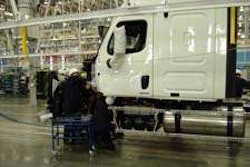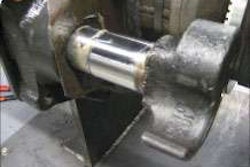U.S. Energy Secretary Dr. Stephen Chu said the Obama administration is working with private business to increase innovation in the commercial truck industry with an overall goal of increasing fuel efficiency and productivity while driving down both acquisition costs and return on investment for alternative technologies.
The Department of Energy is promoting development and use of alternative fuel and powertrain technologies, Chu said today, March 5, at the NTEA Work Truck Show’s Green Truck Summit in Indianapolis. Chu said DOE’s current initiatives vary from compact consumer automobiles to heavy-duty commercial trucks and trailers. The efforts range from aerodynamic initiatives, to vehicle weight reduction through the use of new, lightweight, high-strength steel in automotive designs.
Chu said DOE is pioneering use of vehicle and engine design using government-developed and funded super computers to reduce the time to market for promising new technologies, such as development of a new Cummins, 6-liter diesel engine.
Other DOE initiatives include an increased emphasis on trailer aerodynamics, such as “under tray” aerodynamic systems designed to smooth air flow under a 53-foot dry van, particularly under the trailer’s axles. Chu says, studies have found fleets can increase fuel economy by 5 to 10 percent in conventional long-haul applications.
Chu said high U.S. reserves of natural gas make liquefied natural gas and compressed natural gas fuel options a “no brainer” for the trucking industry. He noted, though, infrastructure is lagging and acquisition costs remain high while ROI for such systems is in the 2-to-4-year range. “Our push here is to drive natural gas technologies to get to a point where acquisition costs drop by 30 percent or 40 percent and ROI falls down to two years or less for these vehicles,” he added. “And those efforts are being helped by the dramatic infrastructure enhancements already under way: By year’s end there will be 275 new, LNG fueling stations located every 150 miles or so along the country’s major trucking routes with another 17 stations under construction.”
Long term, Chu said research shows biofuels could become a viable option one day. He noted research is far enough along and results are encouraging enough to begin construction on a pilot plant to explore mass production of these fuels.
Electric vehicles remain a promising option for many urban fleets, Chu said. And recent battery developments are increasing the efficiency of all-electric vehicles considerably. “The current problem here is battery price,” Chu explains. “Currently, we’re talking about $10,000 to $15,000 for battery systems for these vehicles.” The DOE goal will be to reduce the cost of these battery systems from $600 a kilowatt hour to $150 by 2020.










